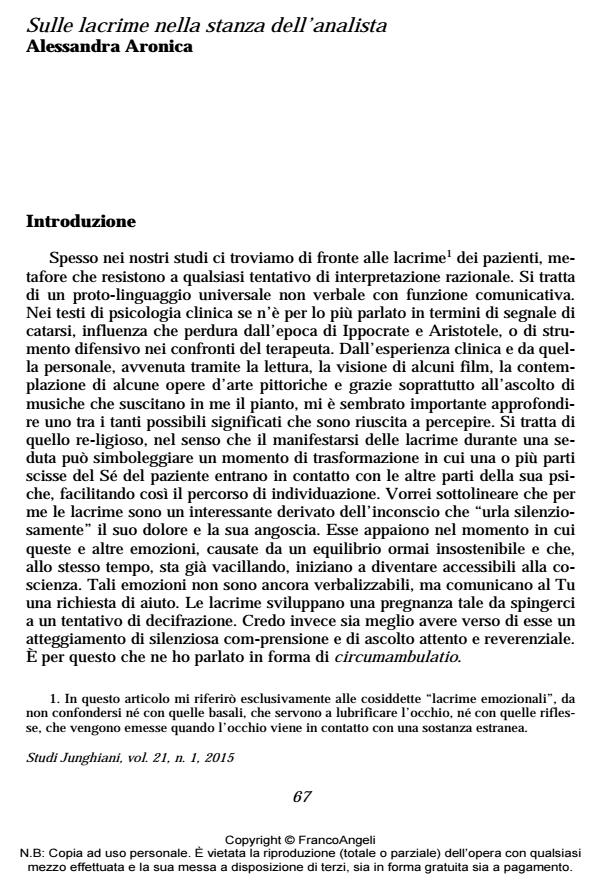Tears in the consulting room
Journal title STUDI JUNGHIANI
Author/s Alessandra Aronica
Publishing Year 2015 Issue 2015/41
Language Italian Pages 16 P. 67-82 File size 82 KB
DOI 10.3280/JUN2015-041006
DOI is like a bar code for intellectual property: to have more infomation
click here
Below, you can see the article first page
If you want to buy this article in PDF format, you can do it, following the instructions to buy download credits

FrancoAngeli is member of Publishers International Linking Association, Inc (PILA), a not-for-profit association which run the CrossRef service enabling links to and from online scholarly content.
In analytic field patient’s tears are not enough considered, except like a cathartic manifestation or a defensive event. The author argues that tears are a proto-language close to music that moves us, an unconscious derivative that can symbolize the mourning for the loss of the Persona, an attempt of self-centring and, above all, a contact with the sphere of the Sacred.
Keywords: Tears, sacred, auto-centring, mourning, music, Persona
Alessandra Aronica, Sulle lacrime nella stanza dell’analista in "STUDI JUNGHIANI" 41/2015, pp 67-82, DOI: 10.3280/JUN2015-041006